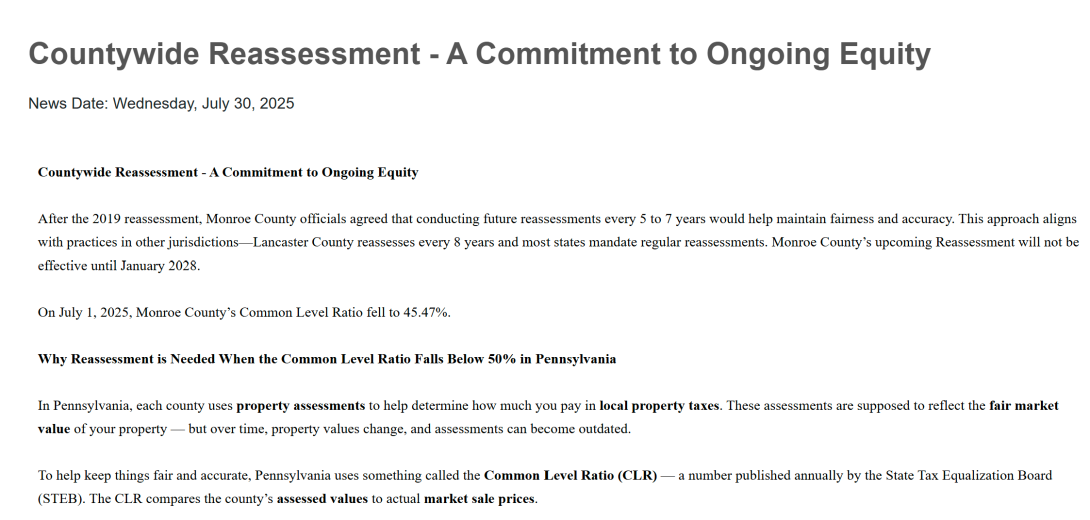
Countywide Reassessment - A Commitment to Ongoing Equity
After the 2019 reassessment, Monroe County officials agreed that conducting future reassessments every 5 to 7 years would help maintain fairness and accuracy. This approach aligns with practices in other jurisdictions—Lancaster County reassesses every 8 years and most states mandate regular reassessments. Monroe County’s upcoming Reassessment will not be effective until January 2028.
On July 1, 2025, Monroe County’s Common Level Ratio fell to 45.47%.
Why Reassessment is Needed When the Common Level Ratio Falls Below 50% in Pennsylvania
In Pennsylvania, each county uses property assessments to help determine how much you pay in local property taxes. These assessments are supposed to reflect the fair market value of your property — but over time, property values change, and assessments can become outdated.
To help keep things fair and accurate, Pennsylvania uses something called the Common Level Ratio (CLR) — a number published annually by the State Tax Equalization Board (STEB). The CLR compares the county’s assessed values to actual market sale prices.
What It Means When the CLR Falls Below 50%
When a county’s CLR drops below 50%, it means that, on average, properties are being taxed on values that are less than half of their current market worth. This typically signals:
• The county’s assessments are outdated — sometimes by decades.
• Some property owners may be paying far more than their fair share, while others may be underpaying, based on how their assessed value compares to actual market value.
• The tax burden is being distributed unfairly.
Why Reassessment Becomes Necessary
A reassessment ensures:
• Fairness: Everyone pays based on the current market value of their property.
• Accuracy: The tax rolls reflect real economic conditions and property changes.
• Legal equity: It reduces the risk of legal challenges from property owners who are being over-assessed compared to others.
Pennsylvania courts have also recognized that a CLR below 50% is a red flag — suggesting a serious disconnect between assessments and real values. In many cases, it may create legal grounds for appeals or even court-ordered reassessments.
Bottom Line
When the CLR falls below 50%, it’s a sign the system is no longer fair or functional. A county-wide reassessment is the responsible step to:
• Restore equity,
• Rebuild trust in the property tax system,
• And ensure that every taxpayer is treated fairly — based on current, not outdated, values.
